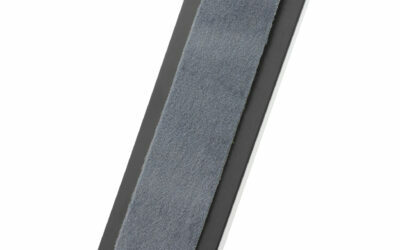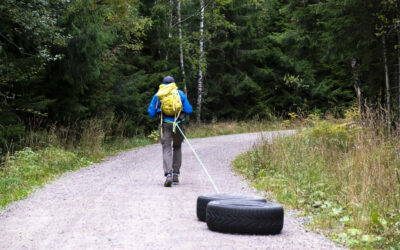Respect your dreams
The first thing I want to say is that if you’re dreaming of something – do it. Just start making it happen! Don’t put it off. Because if there’s one thing that’s certain, it’s that you won’t regret it. It’s amazing what you can achieve if you only begin. I know what I’m talking about. I was there once. I just decided to do what I’d dreamed of for so long. And today, although I scarcely believe it myself, I’ve achieved exactly what I set out to achieve. I hope you can be both inspired and a little knowledgeable by reading on. And that the threshold for setting out on new adventures might become a little more attainable.
Photo: Christian Iversen Styve
Equipment – what really matters?
In general, people are pretty good at getting the right gear today. But don’t be focused on equipment at the expense of other important things. A lot of gear is more than good enough; you don’t always need the absolute latest. Do buy things that last, though – it’s good for the climate. A few things stand out as particularly important when it comes to equipment. For me, good skis, skins and boots have been high on the list of things I prioritise. You can get used to almost anything you take on a tour. But some things you just can’t. If you have skis that aren’t intended for what you need them to do, it’s difficult to get used to that. The same applies to ski boots. Say you have boots that absolutely don’t fit your foot; perhaps they’re too small, or too big, or intended for a completely different use. This is very quickly going to be a problem. It’s not quite so dangerous if your mittens are a little big. You won’t get blisters from big mittens.Make sure to get enough sleep
Another thing I really value is sleep. On multi-day, or multi-week, expeditions, especially. Sleep’s incredibly important if the body’s is to recover the best way it can. And recovery, as we all know, goes hand-in-hand with performance. Of course, we all want to perform at our best if we’re going to have the best possible time. So make sure you have a sleeping bag that’s warm enough. And a sleeping mat that’s warm and comfortable to sleep on. Remember that even the warmest sleeping bag will fall short if the mat’s not warm enough.
The feeling of freedom – with everything you need in tow. Photo: Christian Iversen Styve
Don’t take everything you own
This is something everyone finds difficult. There you stand, the night before you leave, packing for a weekend away, or maybe longer. You’re not sure how much you’ll really need to take. This usually ends up with us packing far more than we really need. So here’s a tip. The next time you’re out, note down the things you actually used and (not least) the things you didn’t. Eventually, you’ll get a better overview of the equipment you need when you’re out. Nothing beats creating an equipment list – apart from packing according to a gear list. Pack it in the bag, tick off the list – done! If you’re going on an organised tour with an equipment list, be very careful to actually bring everything listed on it. There’s a reason the list’s designed the way it is. It can become extremely challenging for a tour leader to magic up the right equipment out of nothing, especially if you’re missing something that essential for the trip to be a success – both for you and everyone else involved.Let things happen
You might be somewhere new. An unfamiliar environment. Perhaps the adventure of a lifetime. If you’re a little stressed by things – new equipment, things that don’t feel right – that’s normal. Maybe your pack’s chafing; maybe you’ve got blisters. The skis are slipping, goggles fogging up. We’ve all either been there or we’ll get there eventually. The strain shows; we get hot; our fuse a little shorter than usual. Relax completely. Start calmly. That’s perhaps the best tip I can give. On my trips, there’s a fixed routine, especially when I’m working with people with far less experience than myself. For the first five to six days, we’re on the “economy” setting. We have to work things out, gain some experience with new equipment and new surroundings. But it’s also important that we don’t feel any pressure. It doesn’t make much difference if we make 12 or 15 km that day. We shouldn’t start out by chasing kilometres right at the beginning. Slowly but surely you get into the new routines. And you’ll know what to do if the skis are slipping, or goggles fog up. Everything’s really about taking it easy, relaxedly, until the routines are in place. And this is equally important whether you’re very experienced or completely new.
Take it easy – you’ll get there! Photo: Jon Hunnålvatn Tøn
Food and drink
There are few things more important than food in the wilderness. None of the great explorers could do without sustenance, and the same applies to the rest of us. As with everything else, routine applies here, too. Fix a routine for stopping for a quick break to top up nutrition and fluids. Personally, I’m a big fan of a 10-15 minute break for every 50-60 minutes of moving. If it’s a tour calling for a strict timetable, I’m more strict about taking breaks than I would be for a tour where time doesn’t play such a big role. In any case, the most important thing is to fill up before you run out, both body and brain.How much food is “enough”?
Good question. And as challenging to answer as “How much gear is enough?” We usually end up taking far too much food with us. So it might also be a good idea to take notes on what you actually eat in the course of a day. I’ve written an article about food for the Åsnes Academy, too – I recommend giving it a look for inspiration on the food front. Or check out Åste’s wonderful tips for homemade food on tour! If you’re going on a longer tour and you’re not sure what food to bring, it’s very wise to test this out in advance. Find out what you like, what’s easy to get into you in the cold, and the amount you need to feel like you’re getting enough. Also, be prepared for the fact that your stomach won’t be used to eating camp food over an extended period. Especially if there’s a lot of fat in it, or you add butter to your dinner. It can definitely affect the digestion. Make sure you melt enough snow for drinking water the day before. It can be very punishing not to have enough water for a day. And it’s very tedious to have to stop everything first thing in the morning to get more water. Especially if you are traveling in a larger group.
Photo: Jon Hunnålvatn Tøn
Expectations
This is an important topic, and one I constantly encounter both on the job and on my own private expeditions. In a sense, everything starts with expectations. And sometimes at the end of the trip we find it hasn’t lived up to expectations – or, hopefully, it exceeds all expectations. Remember that even though you see great images everywhere today, from excursions both far and near, it’s certainly not assured that they represent what it’s actually like to be on that trip. Especially trips that extend over a longer period of time. People do tend to get their cameras out on sunny and windless days.Good days, bad days
It’s important to be prepared for the fact that not every day will be adventurous and cosy. At least not on longer expeditions. There will be ups and downs. Things won’t always go as you’d intended or planned. It almost never does. At the same time, it’s important to remember that the good days outweigh the bad. If you have 15 bad days and 15 good days, it’s still worth it. You just have to prepare as best you can for the bad days. The good days aren’t a problem. If you’ve had a bad day, try to find the small positive things. Remember that, somewhere, there is someone sitting indoors, bored. In an office. Who trade places with you at the drop of a hat. Tomorrow, everything will be fine again. Try your best to enjoy every single day! I spend a lot of time mapping the expectations of those I take out with me on trips. It’s vitally important that expectations are realistic and possible to meet. You can manage expectations right from the start if there are unrealistic expectations, or expectations on the wrong track. If you don’t know exactly what you’re getting into, then it’s not so easy to know what you can or should expect. If you travel together as a group, there will always be dozens of different expectations, and you can’t satisfy everyone. Then it’s about making a joint plan for the way forward. It’s about give and take – as it often is when you’re in a group.
Practice makes perfect! Photo: Jon Hunnålvatn Tøn
Training
You can never start too early with training for a specific expedition, or expeditions in general. The most important thing about training for a tour is that any surplus of energy buys increased well-being and joy. But make sure you give your body enough time to get in shape. It’s so easy to get too overdo at the start, or to wait too long before you get into it. Then it’s a sudden burst of frantic activity at the last minute, right before you leave. If you’re not already in good shape, its important to realise that it takes time to build a proper foundation. Think of it as a marathon – not a sprint.
Get into tyre training!
How to make your own tyre equipment and drag it everywhere.
Enjoy every single day
It’s just as important to train in using your equipment as it is to train the body. Familiarize yourself with the equipment you’ll use on the trip. Don’t pack a bag full of unused gear you haven’t had out for a while. You don’t need to become an expert; far from it. But you have to know a little about what you’re doing to before you can practice. We all learn as we go, of course; but the more you know before you leave, the more you can enjoy your trip. Take it one day at a time; be present in the moment. Don’t think too much about what’s going to happen later in the trip. Set short interim goals rather than thinking too much about the final destination. There’s no doubt that his makes things easier when things get difficult. On long trips, the goal may seem very distant indeed, too hard, even unattainable. Focus, instead, on the small things, which are just as important in the big picture. It’s a great idea to write a diary. This’ll help you to remember all these small but important moments in the future. If you don’t write them down, it’s impossible to remember them all when the expedition’s over. It’s absolutely wonderful to be able to look back on good travel experiences afterwards. You can write down things you need to remember, or do differently next time. For all these reasons, a diary helps you to develop as a traveller. NNote down small things that feel like a victory, anything that you feel you’ve mastered or achieved. Challenges you’ve solved, and so on. This helps to give the feeling of mastery a real boost. Which is so incredibly important on days when things don’t go so well. hen you start to doubt yourself and your abilities, remind yourself how good you actually are!
Enjoy every single day! Photo: Jon Hunnålvatn Tøn

Photography on tour
Capturing moments of magic with a camera can add an extra dimension to the tour experience. With a little system and some simple steps, you can become an even better photographer. Here are some tips how.

How to feed a hunting dog
Correct nutrition is the alpha and omega for a healthy, strong and happy hunting dog performing to its limits day after day in the mountains. A well-trained hunting dog can quickly cover more than 60 km in hilly terrain, marshes and woods. So if you’re out for a number of days, feeding is everything.

Storing skis until next season
Putting your skis to bed for the summer, clean and protected, is a chore, but it’s got to be done. It’s more than worth it. Here we break down the basics. Your skis will thank you. Actually, you’ll thank yourself come the first snow – for all sorts of reasons…

How to use Åsnes short skins
Wondering how to use Åsnes short skins? Not sure what these skins are good for and what the point is? Or wondering how to install a short skin? How to customize them? Whatever it is, here are the answers.

Replacing and renewing glue on skins
Unfortunately, skin glue doesn’t last forever. The skin itself, on the other hand, only gets better and better until it wears out. So if you replace the old glue, your skins can last many years. Moribund glue can be replaced, either with tape or sheets, or from a tube. We explain how.

Tyre training
Get started with tyre training – the best way to prepare for an expedition or the coming ski season.
